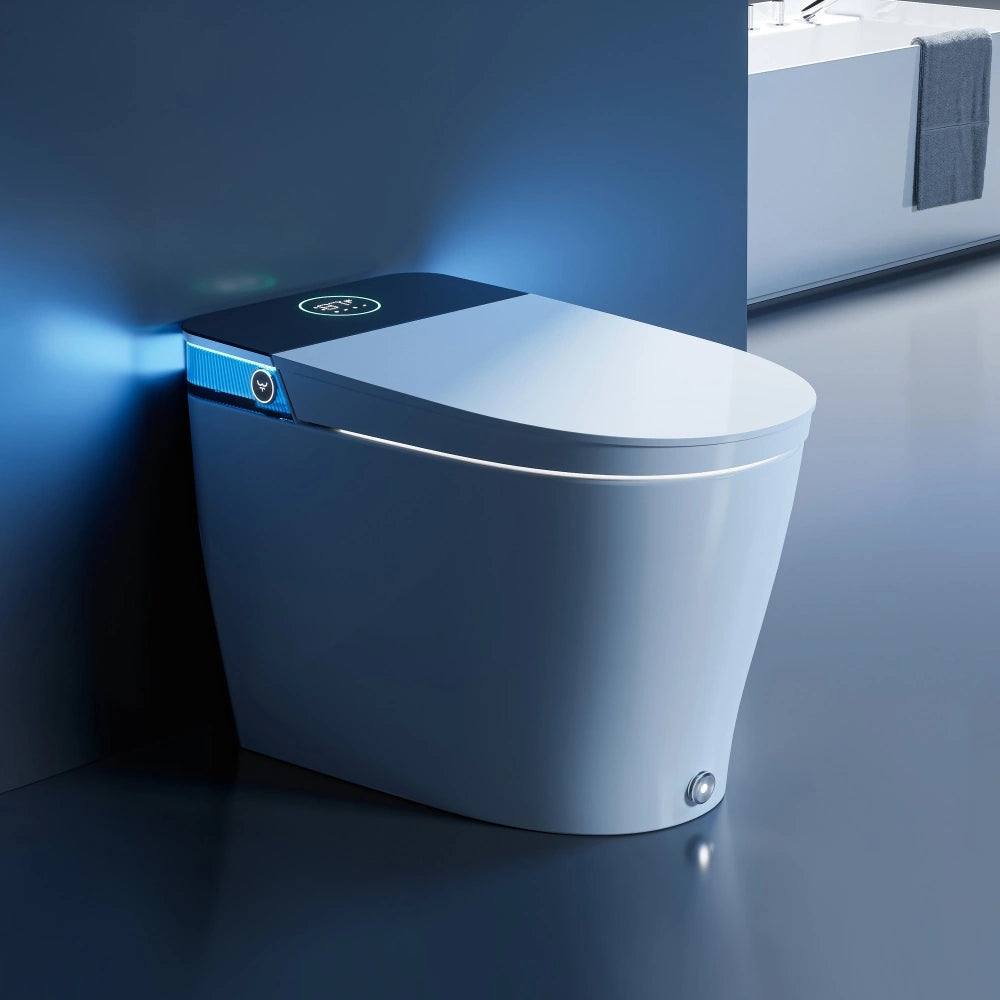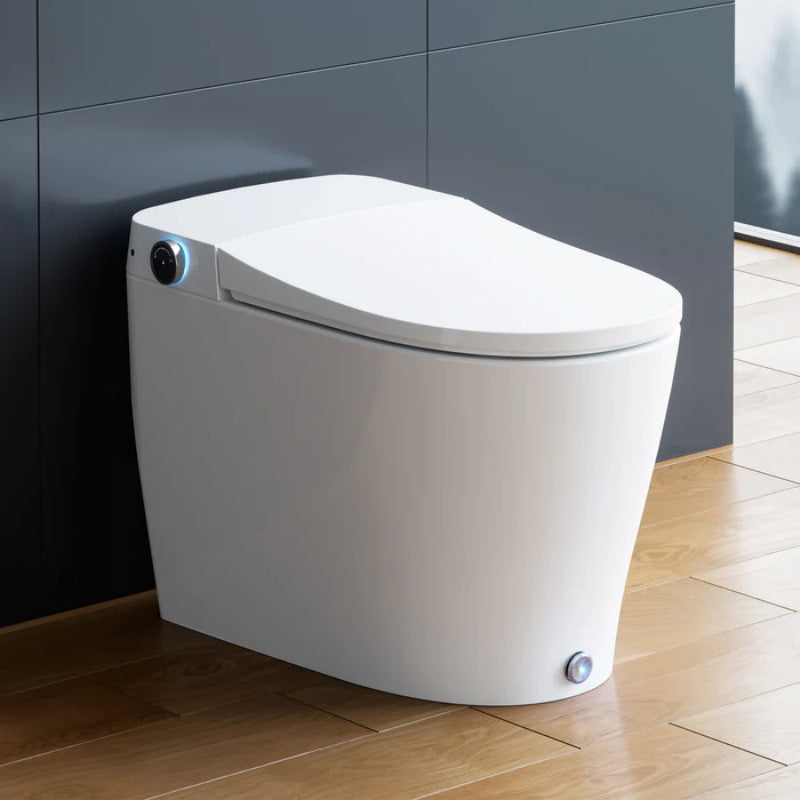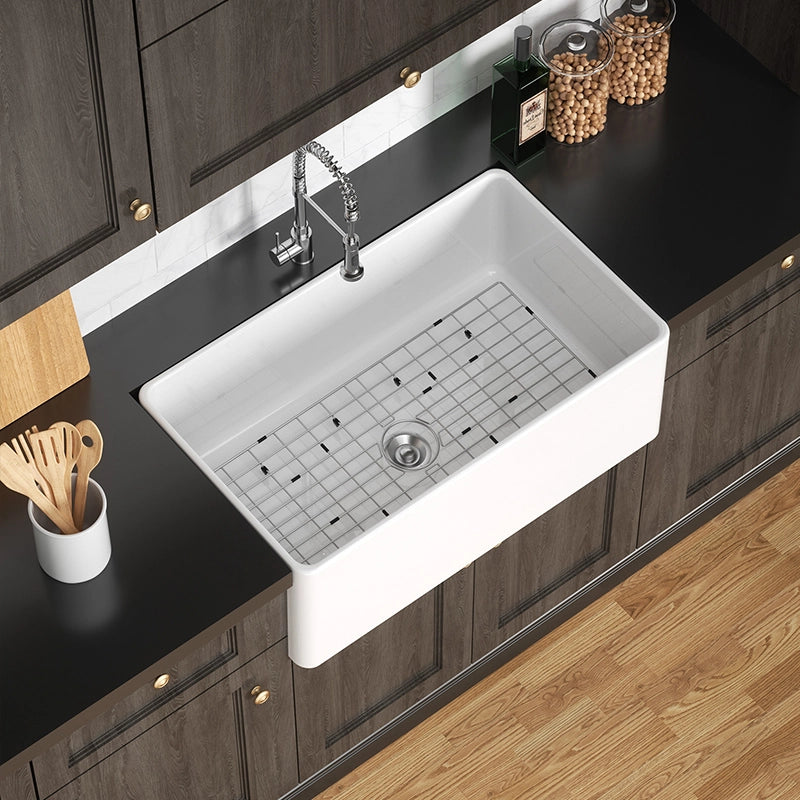Thinking about updating a bathroom or kitchen and want to free up floor space? Learning how to install a wall mount sink is a smart solution. Wall-hung sinks make small rooms feel bigger, allow easy cleaning underneath, and have a clean, modern look. This step-by-step guide walks you through the whole installation process, so you can avoid leaks, keep everything up to code, and enjoy a reliable, safe result.
Quick Start: How to Install a Wall Mount Sink?
Project Time: 1-3 hours Difficulty: Moderate (you'll need to drill, measure, and handle basic plumbing)
Key Cautions:
- Never attach only to drywall. Mount the sink into solid wood blockings or wall studs.
- Pre-assemble the faucet and drain on the sink to make installation easier and more leak-proof.
- Leveling and waterproofing are very important for a long-lasting result.
- Have a helper. Many sinks are heavy and awkward.
How to Install a Wall Mount Sink: Tools and Materials Checklist
Here's what you'll need for a successful wall mount sink installation:
Tools
- Drill (wood and masonry bits)
- Tape measure
- Level (24" or longer)
- Stud finder
- Wrench and pliers
- PPE (goggles, gloves)
- Utility knife
- Bucket and rags
Mounting Hardware
- Manufacturer-provided brackets or clips
- Lag screws (for wood) or toggle bolts/sleeve anchors
Plumbing Supplies
- Faucet kit and supply lines
- New P-trap kit
- Plumber's putty
- PTFE (thread) tape
- Silicone sealant (neutral cure)
Wall/Support Materials
- 2x6 or 2x8 wood blocking (if adding to wall)
- Shims (for leveling)
- Drop cloth
Optional
- Mounting legs for wall mounted sink or support arms (for heavy sinks)
- Backer board
Be certain to match the anchor type to your wall (wood stud, hollow, masonry, or tile) for the safest result.

How to Install a Wall Mount Sink: Planning Layout & Rough-Ins
Decide Mounting Height
- Standard bathroom lavatory: The rim sits 33–36 inches from the floor.
- ADA-compliant installation: Maximum 34-inch rim, with brackets usually at about 38–39 inches.
Tip: Check the sink's instruction sheet for any height details.
Check Plumbing Rough-Ins
| Fixture | Standard Height (from floor) | Center-to-Center |
|---|---|---|
| Drain Pipe Center | 18–19 inches | Centered |
| Hot/Cold Water Supply | 21 inches | 8 inches apart |
Verify Wall Structure & Install Blocking
How strong is your wall? Most wall mount sinks need more than just drywall support. Here's how you check—and fix—your wall for a safe installation:
Find studs: Use a stud finder to locate framing at the desired sink height.
Check for wood blocking between studs, right where the sink will hang.
If missing, add blocking:
- Carefully remove drywall only where needed.
- Install a 2x6 or 2x8 between the studs, level, and flush with the surface.
- Screw the blocking to the studs for strength.
For tile or masonry walls:
You may need toggle bolts or sleeve anchors rated for the sink's weight.
If the wall isn't flat or straight (plumb), attach a backer board, like a smooth 1x10, to create a perfect surface.
Prepare Surface & Waterproofing
A wall mount sink must be sealed to avoid water damage. Follow these steps:
If your wall is tiled:
- Mark where you'll drill with painter's tape.
- Use a masonry or carbide-tipped drill bit.
Seal all drilled holes—apply neutral-cure silicone inside each hole before adding fasteners.
Check the wall is flat and plumb. Use shims if needed before mounting the bracket.
Bench Assembly: Faucet & Drain Prep
Install a faucet and drain on the sink—before hanging it! This is easier and reduces leaks.
Install faucet and supply tails using included washers and correct order (per instructions).
Install the drain basket or pop-up.
- Use plumber's putty for a tight seal.
- Make sure overflow holes are aligned.
If using a wall-mount faucet:
- Double-check the reach and position above the basin.
- This bench work saves trouble and keeps connections dry and tight.

Bracket/Clip Installation & Markup
The wall hung sink mounting bracket for wall hung sink installation must be straight, level, and at the proper height.
Mark bracket holes:
- Use the template provided or hold the sink up for reference.
- Confirm the height and level with a spirit or laser level.
Drill holes:
- For wood, use a 3/16" bit.
- For masonry or tile, use a masonry bit and proper anchor.
Fasten brackets:
- Use lag screws into wood blocking or wall studs (often 1/4" x 2-1/2").
- Use washers to spread load and avoid cracking.
- If using hollow-wall toggle anchors or masonry sleeves, ensure anchors are rated for the sink's full weight.
All bracket holes should land in solid wood or appropriate anchors; never only in drywall!
Mount and Level the Sink
Finally, it's time to hang the sink and get it just right.
With a helper supporting the sink, lift it onto the bracket or hardware.
If legs are included, set them under the front edge now. Don't fully tighten—just steady the basin.
Double-check horizontal and vertical level:
- Use a long level on the rim and front face.
- Adjust shims as necessary.
Tighten mounting hardware evenly:
- Hand-tight, then a slight turn with a wrench.
- Don't overtighten! Porcelain can crack.
- If using support legs, adjust so they touch the floor and help carry sink weight.

Make Plumbing Connections
With the sink on the wall, connect the water supply lines and drain.
Dry-fit the P-trap and drain:
Make sure it aligns with the wall drain outlet, with a slight slope for good drainage.
Assemble the P-trap:
- Wrap threads with PTFE tape.
- Hand-tighten, then use a wrench for a snug fit (don't overtighten).
Connect supply lines:
- Attach to the faucet and shutoff valves.
- Use thread tape or gaskets as required.
Check all joints:
- Open each shutoff slowly and watch for leaks.
- Run water, fill the basin, test the stopper, and inspect under the sink.
Finish & Seal
Protecting your wall and sink from water with neat caulking is crucial to finishing a wall mount sink installation:
- Apply neutral-cure silicone sealant at the seam between the sink and the wall. This sealant is safe for painted walls and most finishes. Completely fill the gap to prevent water from seeping in.
- Apply a small bead of silicone to exposed bolts and other mounting components to prevent water from corroding the screws.
- Smooth the sealant with a damp finger or a caulking tool, then wipe off any excess with a damp cloth to avoid leaving any residue on the sink surface.
- If there are support legs, ensure they are firmly grounded and support the weight, and adjust them before the silicone cures.
- Allow the silicone to cure fully, typically 24 hours, without using the sink or applying pressure, to ensure a watertight seal.
Carefully sealing all edges and components protects the wall and ensures a professional and durable installation.
Quality Checks & Troubleshooting Essentials
This QA checklist makes sure your wall mount sink is safe and leak-free:
- All bolts and fasteners are tight but not overtightened.
- The sink feels rock-solid rather than flex or wobble.
- All plumbing joints are dry, with no drips.
- Faucet delivers hot and cold.
- Drain stop works up and down.
- All traps and connections are sealed without smells or leaks.
Common Problems (and How to Fix Them):
- Anchoring only to drywall or tile? Re-mount brackets into solid wood blocking or switch to proper anchors.
- Sink not level? Back out and shim under bracket or basin edge.
- Leaks at drain or trap? Re-seat washers, tighten with care, and ensure correct alignment.
- Rough-ins misaligned (pipes in wrong spot)? Use flexible water supplies or a slip-joint extension on the drain.
Accessibility, Code & Safety Notes
ADA Compliance Tips:
- The rim height is no more than 34 inches off the floor.
- Bracket/clip height is often 38–39 inches; double-check specs.
- 27-inch knee clearance below for wheelchair users.
- Cover or insulate pipes if exposed.
Permits & Safety:
- You might need a permit if moving pipes—always check your city's code.
- Use proper eye and hand protection.
- Ask for help lifting wall-mounted sinks (some weigh more than 60 lbs).
- Always lift with your legs, not your back.
Bill of Materials (Reference Table)
| Item | Typical Quantity | Notes/Specs |
| Lag screws | 4–6 | 1/4" x 2-1/2", for wood blocking |
| Toggle/sleeve anchors | 2–4 | For hollow or masonry wall |
| 2x6 backing | As needed | Blocking between studs, ~16" on center |
| Faucet kit | 1 set | As specified by sink |
| Silicone sealant | 1 tube | Neutral cure, mold-resistant |
| P-trap kit | 1 | 1-1/4" or 1-1/2" as needed |
| Plumber's putty | 1 tub | For drain installation |
Based on the provided materials list, the following is a budget analysis and purchasing recommendations for installing a wall-mounted sink you might be interested in:
Basic Materials: Most basic materials (such as silicone, pipes, screws, etc.) are affordable, typically between $50 and $100.
Special Tools: If you don't have special tools, you'll need to buy or rent them, which costs about $30 to $70. Spending this money on the necessary tools will help you get the job done more smoothly.
Labor: In terms of labor, if you hire a professional to do it, the cost will be between $300 and $700. The specific amount depends on the complexity of the work. The more troublesome it is, the more expensive it may be.
Purchasing Recommendations:
- You have to choose high-quality silicone, which should be neutral curing and mildew-resistant. This way, the sealing effect will be long-lasting, less prone to problems, and more reliable to use.
- The pipes must be durable, corrosion-resistant, and meet local standards so that water can flow smoothly without causing trouble and be worry-free to use.
- The bracket must be strong enough to support the weight of the sink. It is recommended to choose stainless steel or thickened steel, so that it is reliable and reassuring.
Summary:
Your total budget for installing a wall-mounted sink should range from $400 to $900, depending on the materials used and whether you want to hire a professional. It is recommended to choose materials and tools according to your actual needs. This can not only ensure the quality of installation but also control costs, which is quite practical.
Save this for your pre-install shopping trip!

Conclusion & Key Takeaways
To know how to install a wall mount sink does not need to be hard. Success comes from solid wood backing, careful leveling, and pre-assembly of the faucet and drain. Follow these steps and you'll enjoy a beautiful, practical fixture that lasts for years. Always use the right anchors, double-check for leaks, and put the finishing touch with caulk. If you take your time and pay attention to detail, you'll soon have a bathroom or kitchen that's safer and more stylish.
Tip: If the project feels too big, consider hiring a professional for adding blocking or rough-in plumbing updates.
FAQ: More About How to Install a Wall Mount Sink
How do you mount a wall sink?
Installing a wall-mounted sink requires securing it to a sturdy structural support within the wall to ensure stability and safety. Typically, this is done by first positioning the wall studs or installing solid wood spacers at the desired height, then securing heavy-duty brackets or bolts as a foundation.
It is best to install the faucet and other parts in advance, and then carry out the overall installation. This can save a lot of trouble and the effect will be more reliable. The sink is then carefully placed on the support, leveled, and secured. Some models also incorporate floor supports. Finally, the plumbing is connected and sealed to prevent leaks. It is extremely important to install it in a standardized and correct manner which is directly related to whether it can bear weight, whether it complies with regulations, and how long it can be used.
Are wall-mounted sinks a good idea?
A wall-mounted vanity sink is an excellent choice for many bathrooms, especially those with limited space. Attached directly to the wall, it creates a spacious feel and makes cleaning easier.
Its simple, stylish appearance complements both modern and classic styles, and the mounting height can be customized for added convenience. However, it needs to be supported by a solid wall, so you may need to do more preparation work during installation. While it offers less countertop and storage space than a vanity, it can be combined with shelving or wall cabinets for added functionality. It is also particularly suitable for barrier-free design.
Can I install a top mount sink without clips?
While it's technically possible to install a countertop sink without clips, it's generally not recommended. Most countertop sinks rely on clips for stability. While omitting the clips may temporarily work, it increases the risk of shifting, leaking, or damaging the sink.
Wall-mounted sinks must use brackets because the weight is borne by the wall. Stone countertops and other materials can sometimes be installed solely with edges and adhesives, but this requires precise workmanship. In short, using the manufacturer's recommended clips or brackets ensures a secure installation and extends its lifespan.
How much does it cost to install a wall-mounted sink?
The installation cost of a wall-mounted sink is related to its style, materials used, and how it is installed. Once these factors change, the price will also change. If you do it yourself, you can usually get it done for under $250, which includes the sink, accessories, and basic plumbing materials. Professional installation costs between $300 and $700 for labor alone, and if plumbers, electricians, and carpenters are involved, the cost will skyrocket. Wall reinforcement and plumbing modifications will increase the cost, and if you choose a high-end model or a product that is extremely difficult to install, the total cost can easily exceed $1,000.
Overall, DIY installation can indeed save some money, but hiring a professional to do it will ensure that the installation is stable and sturdy so that you can use it with confidence.
What is a wall-mounted sink called?
It is called a wall-mount sink, wall-hung sink, or wall-mounted lavatory. Wall-mounted sinks are known by many names. They attach directly to the wall, eliminating the need for a vanity or column, freeing up space below and creating a practical solution. This type of sink is popular in bathrooms and small kitchens, saving space and providing a minimalist, modern look while making the floor easier to clean. Available in a variety of sizes, shapes, and materials, some with integrated backsplashes or shelves, they are ideal for small, minimalist, and accessible bathrooms, and can be installed at custom heights.
References:
https://www.huduser.gov/portal/publications/pdf/fairhousing/fairch7.pdf
https://www.ada.gov/law-and-regs/design-standards/2010-stds/








Leave a comment
This site is protected by hCaptcha and the hCaptcha Privacy Policy and Terms of Service apply.